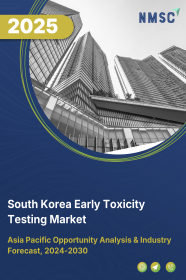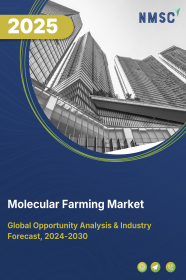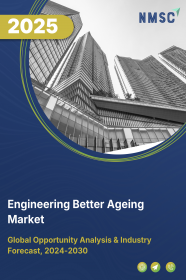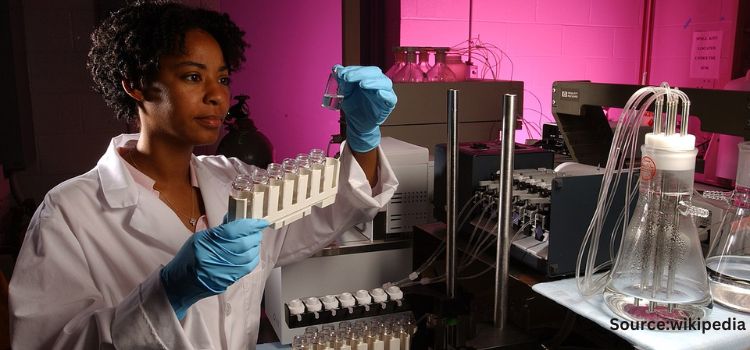
South Korea Early Toxicity Testing Market by Technique (In Vivo, In Vitro and In Silico), by Toxicity Endpoint (Genotoxicity, Dermal Toxicity, Skin Toxicity, Ocular Toxicity, Phototoxicity, and Others), and by End-User (Pharmaceutical Industry, Cosmetic Industry, Chemical Industry, Food Industry, and Others) – Opportunity Analysis and Industry Forecast, 2025–2030
Industry: Healthcare | Publish Date: 22-May-2025 | No of Pages: 148 | No. of Tables: 112 | No. of Figures: 57 | Format: PDF | Report Code : HC755
US Tariff Impact on South Korea Early Toxicity Testing Market
Trump Tariffs Are Reshaping Global Business
South Korea Early Toxicity Testing Industry Overview
The South Korea Early Toxicity Testing Market size was valued at USD 50.2 million in 2024, and is predicted to reach USD 112.0 million by 2030, at a CAGR of 14.3% from 2025 to 2030.
The early toxicity testing market in South Korea is propelled by the expansion of drug development pipelines and increased investments in research and development. These factors contribute significantly to the market's growth.
However, high testing costs present a challenge, particularly for small and medium-sized enterprises. The integration of new technologies, including 3D cell cultures, offers promising opportunities for more reliable and accurate testing, expected to further accelerate market growth in the coming years.
Key market players such as Merck KGaA, WuXi AppTec, Medpace, Thermo Fisher Scientific, Charles River Laboratories International, Inc., and others are actively engaged in initiatives such as product launches and strategic collaborations across regions to maintain their competitive edge. These efforts aim to ensure quicker identification of safety issues, while advancements in 3D cell culture reduce clinical trial risks and enhance safety and regulatory compliance, fueling the South Korea early toxicity testing market demand.
Expansion of Drug Development Pipelines Fuels Market Growth
The growth of drug development pipelines is a significant driver of the early toxicity testing market in South Korea. As pharmaceutical companies continue to expand their pipelines, new drugs undergo rigorous testing to identify potential toxic chemicals that may pose risks to human health.
Early detection of such toxins enhances the efficacy of drugs and minimizes time and costs during development. This ongoing expansion in the pharmaceutical sector leads to an increased demand for early toxicity testing methods, thereby driving market growth.
Rising Investments in Research and Development Accelerate the South Korea Early Toxicity Testing Market Growth
Investments in research and development are crucial for the expansion of the early toxicity testing market in South Korea. As funding for R&D increases, testing methodologies become more advanced, providing faster and more efficient results. These investments also lead to the development of innovative tools and techniques for toxicity testing, reducing the time required for evaluations and improving the safety assessments of chemicals and pharmaceuticals. This continuous cycle of innovation contributes to the overall growth of the market.
High Cost of Early Toxicity Testing Limits Market Growth
The high cost associated with early toxicity testing remains a significant constraint on the South Korea early toxicity testing market expansion. Advanced testing technologies are often financially prohibitive for small and medium-sized enterprises, limiting their ability to adopt these innovations.
As a result, many companies continue to rely on traditional animal testing methods, which slows the transition to more ethical and effective testing solutions, ultimately hindering market growth.
Adoption of New Technologies Offers Growth Opportunities
The integration of advanced technologies, particularly 3D cell culture in in-vitro testing, is expected to create substantial growth opportunities for the early toxicity testing market in South Korea. 3D cell cultures more accurately replicate the complexity of human tissues and organs, offering more reliable and precise toxicity data compared to conventional 2D models.
By simulating human microenvironments, 3D cultures enhance the prediction of toxic effects and minimize clinical trial risks. This technological advancement is expected to accelerate the adoption of early toxicity testing methods, further driving market growth.
Competitive Landscape
The promising players operating in the South Korea early toxicity testing industry includes Merck KGaA, WuXi AppTec, Medpace, Thermo Fisher Scientific, Charles River Laboratories International, Inc., Eurofins Scientific, PerkinElmer, Inc., Bio-Rad Laboratories, Inc., Agilent Technologies, Inc., RayBiotech, Inc., ICON plc, XenoTech, Premier Research, Linical Co. Meditrial, Enzo Biochem Inc., and others.
South Korea Early Toxicity Testing Market Key Segments
By Technique
-
In Vivo
-
In Vitro
-
Cell Culture
-
PCR
-
ELISA
-
Western Blotting
-
Protein Binding Assays
-
-
In Silico
By Toxicity Endpoint
-
Genotoxicity
-
Dermal Toxicity
-
Skin Toxicity
-
Ocular Toxicity
-
Phototoxicity
-
Others
By End-User
-
Pharmaceutical Industry
-
Cosmetic Industry
-
Chemical Industry
-
Food Industry
-
Others
Key Players
-
Merck KGaA
-
WuXi AppTec
-
Medpace
-
Thermo Fisher Scientific
-
Charles River Laboratories International, Inc.
-
Eurofins Scientific
-
PerkinElmer, Inc.
-
Bio-Rad Laboratories, Inc.
-
Agilent Technologies, Inc.
-
RayBiotech, Inc.
-
ICON plc
-
XenoTech
-
Premier Research
-
Linical Co. Meditrial
-
Enzo Biochem Inc.
REPORT SCOPE AND SEGMENTATION:
|
Parameters |
Details |
|
Market Size Value in 2024 |
USD 50.2 million |
|
Revenue Forecast in 2030 |
USD 112.0 million |
|
Value Growth Rate |
CAGR of 14.3% from 2025 to 2030 |
|
Analysis Period |
2024–2030 |
|
Base Year Considered |
2024 |
|
Forecast Period |
2025–2030 |
|
Market Size Estimation |
Million (USD) |
|
Growth Factors |
|
|
Companies Profiled |
15 |
|
Market Share |
Available for 10 companies |
|
Customization Scope |
Free customization (equivalent up to 80 working hours of analysts) after purchase. Addition or alteration to country, regional, and segment scope. |
|
Pricing and Purchase Options |
Avail customized purchase options to meet your exact research needs. |

















 Speak to Our Analyst
Speak to Our Analyst




















